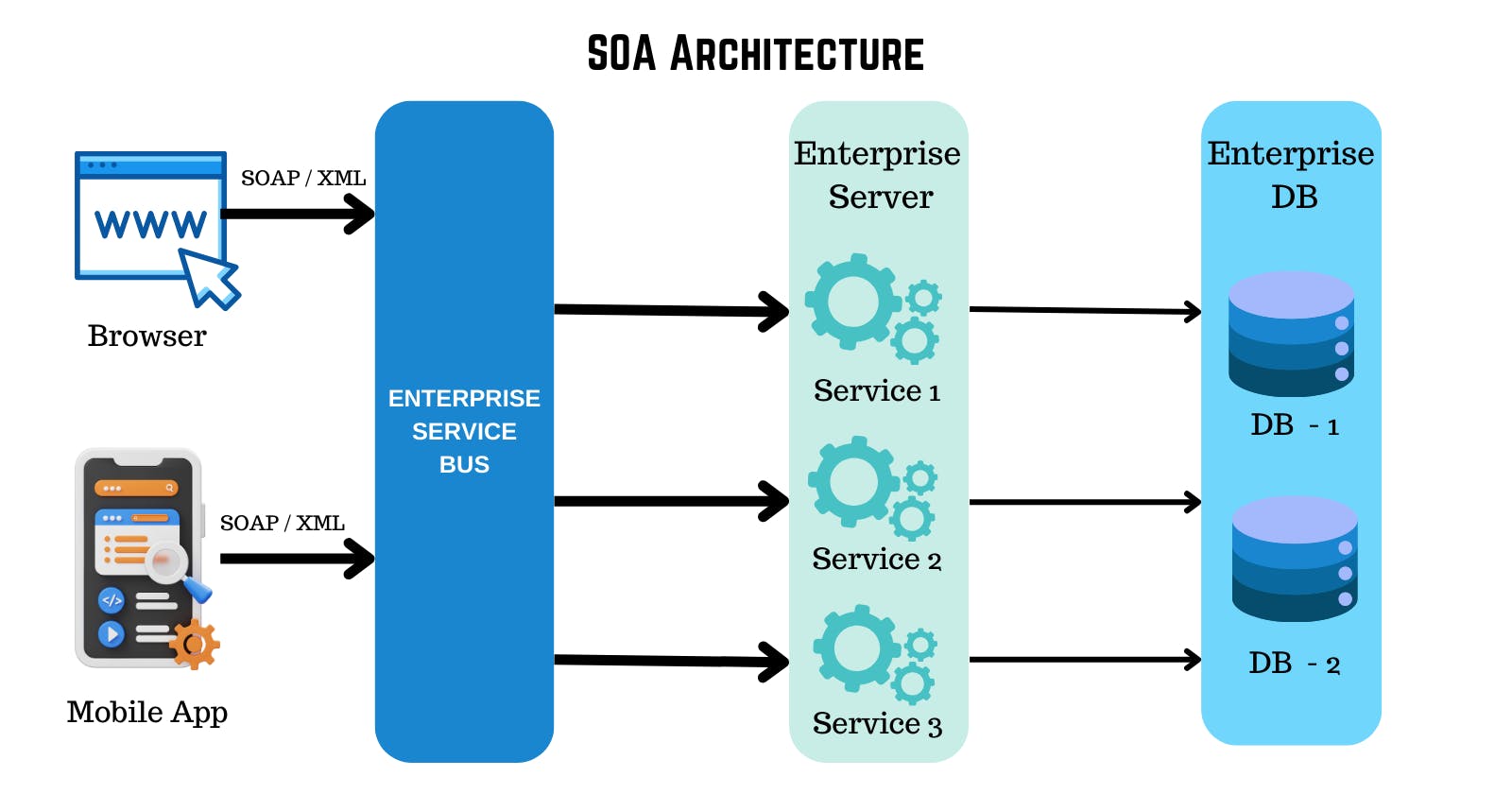Service Oriented Architecture - A Modular Approach to Software Development
Service-Oriented Architecture (SOA) has emerged as a prominent architectural style in software development. It breaks down applications into independent, reusable components called services. These services communicate with each other over a network using standardised protocols, enabling a modular and flexible approach to building complex systems. For instance, the user authentication functionality is necessary for several business operations within an organisation. You can construct a single authentication service and use it for all applications, saving you the trouble of having to rewrite the authentication code for every business transaction.
Benefits of SOA:
Increased Reusability: Services can be easily reused across different applications, reducing development time and effort. Imagine a user authentication service used by both a company's website and mobile app.
Improved Agility: SOA allows for independent development and deployment of services, facilitating faster adaptation to changing business needs.
Enhanced Scalability: Services can be independently scaled up or down based on their individual needs, ensuring efficient resource allocation.
Platform Independence: SOA promotes the use of standardised protocols and interfaces, making services interoperable across different platforms and technologies.
Loose Coupling: Services are loosely coupled, meaning changes in one service have minimal impact on others, improving maintainability and fault tolerance.
Shortcomings of SOA:
Increased Complexity: Designing, implementing, and managing a complex network of services can be challenging, requiring significant upfront investment and ongoing maintenance.
Security Concerns: Exposing services publicly introduces security vulnerabilities, necessitating robust security measures to protect sensitive data and prevent unauthorised access.
Performance Overhead: Communication between services can introduce additional overhead compared to tightly coupled architectures, potentially impacting performance.
Testing Challenges: Testing complex interactions between services can be intricate and time-consuming, requiring specialised testing tools and methodologies.
Conclusion:
SOA offers a compelling approach for building flexible and scalable software systems. However, it's crucial to carefully weigh its benefits against the potential shortcomings and ensure its suitability for the specific project requirements. By understanding both sides of the coin, developers can leverage the strengths of SOA while mitigating its associated challenges.
